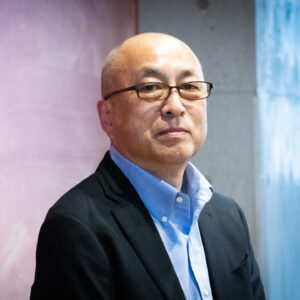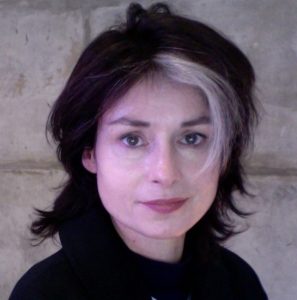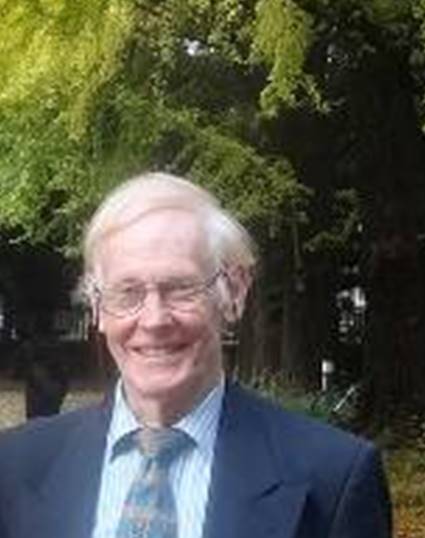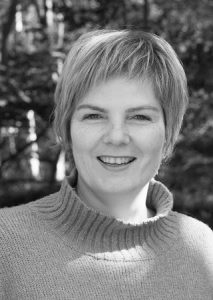Research Fellow 2023-
Dr. Masahiko HARA

- Research Interests
- Self-Assembly, Nanotechnology and Nanoscience, Scanning Probe Microscopy and Spectroscopy, Nano-Bio-Interfaces, Spatio-Temporal Functions, Emergent Functions, Flucto-Order (Fluctounomous) Functions, Bio-Computing, Biological Information Processing, Chemical Evolution, Origins of Life, Natural Intelligence, and Science/Technology and Art/Design Hybrid Innovation.
- Comment
- Effort and Perseverance, Sweat and Guts
No Rock, No Life
Science is not everything.
- Current Position
- Senior Fellow, Human Technology Centre, RWTH Aachen University, Germany
Tokyo Tech Research Fellow, School of Environment and Society, Tokyo Institute of Technology, Japan
Visiting Professor, Priority Organization for Innovation and Excellence, Kumamoto University, Japan
Visiting Researcher, Central Saint Martins, University of the Arts London, UK
MAJOR PUBLICATIONS
Papers
- A. Portela, T. Yano, C. Santschi, O.J.F. Martin, H. Tabata, and M. Hara. 2017. Highly sensitive SERS analysis of the cyclic Arg-Gly-Asp peptide ligands of cells using nanogap antennas. In J. Biophoton. 10: 294-302.
- L. Zhu, M. Aono, S.-J. Kim, and M. Hara.2013. Amoeba-based computing for traveling salesman problem: Long-term correlations between spatially separated individual cells of Physarum polycephalum. In Biosystems 112: 1-10.
- J. Noh & M. Hara. 2002. Final phase of alkanethiol self-assembled monolayers on Au(111). In Langmuir 18: 1953-1956.
- K. Tamada, M. Hara, H. Sasabe, and W. Knoll. 1997. Surface Phase Behavior of n-Alkanethiol Self-Assembled Monolayers Adsorbed on Au(111): An Atomic Force Microscopy Study. In Langmuir 13: 1558-1566.
- M. Hara, Y. Iwakabe, K. Tochigi, H. Sasabe, A.F. Garito, and A. Yamada. 1990. Anchoring structure of smectic liquid-crystal layers on MoS2 observed by scanning tunnelling microscopy. In Nature 344(6263): 228.
WRHI Specially-appointed Professor 2018-2021
IRFI-WRH Sepcially-appointed Professor 2022-
Dr. Betti MARENKO

Professor Marenko is a design theorist, academic, educator, public speaker and consultant.
Dr. Marenko’s background is in sociology, philosophy and cultural studies, and she has over 10 years of experience in design education and research. Her interdisciplinary approach brings together design studies, continental philosophy and the analysis of digital cultures to investigate the relationships between design, society and technologies, and their role in shaping possible futures. Her work has featured frequently in international conferences, collections and peer-reviewed journals, including Design and Culture, Design Studies and Digital Creativity. She is a co-editor of the volume Deleuze and Design (Edinburgh University Press 2015), the first book to use Deleuze and Guattari to provide an entirely new theoretical framework to address the theory and practice of design.
Dr. Marenko leads the BA Product Design Contextual Studies Programme at CSM, and prior to this was Lecturer in Sociology at the University of Essex, and Visiting Lecturer at the University of Urbino. Her earlier work focused on the practices and politics of body modification – specifically tattooing – analysed through the thought of Deleuze, Guattari and Spinoza, and she is the author of two seminal books in Italian on this subject: Ibridazioni. Corpi in Transito e Alchimie della Nuova Carne (Roma, Castelvecchi 1997), and Segni Indelebili, Materia e Desiderio del Corpo Tatuato (Milano, Feltrinelli 2002). Both are works of practical philosophy based on her extensive experience of, experimentation with, and reflection on permanent body marking.
MAJOR PUBLICATIONS
Books
- B. Marenko. 2017. Filled with wonder. The enchanting android from cams to codes. In Encountering Things. Design and Theories of Things. Leslie Atzmon and Prasad Boradkar (eds.) London, Bloomsbury. pp.19-34.
- B. Marenko. 2017. Incertitude, contingence et intuition matérielle: un cadre de recherché pour un design mineur. In Biomimétisme: science, design et architecture. Manola Antonioli and Laurent Karst (eds.) Paris, Éditions Loco. pp. 31- 43.
- Experiences in the UK on the Control of Discharges of Sewage and Sewage Sludge to Estuarine and Coastal Waters. M G Norton, 1983. Pp947-1022 in Ocean Disposal of Municipal Wastewater: Impacts on the Coastal Environment, MIT Press, 1983.
- J. Brassett and B. Marenko. 2015 Introduction.In: Deleuze and Design. Deleuze Connections. Edinburgh University Press, Edinburgh,pp.1-30.
- B. Marenko. 2014 Neo-Animizm and Design. A New Paradigm in Object Theory. Design and Culture, 6(2). pp.219-242.
- B. Marenko. 2010 Contagious affectivity: the management of emotions i late capitalist design. 6yh Swiss Design Network Conference, Basel, Switzerland.
WRHI Specially-appointed Professor 2018~2020
Dr. Ulrike OBERLACK

Professor Oberlack is lecturer of Product, Ceramic and Industrial Design in the MA Design Programme: Ceramics, Furniture or Jewellery at Central Saint Martins (University of the Arts London)
With a professional European background in organisational science and art and design, Dr. Oberlack’s past six years of practice-based research have been focused on light as a non-material medium in relationship to the body.
Developing initially during her MA Design; Jewellery studies at Central Saint Martins, this research has evolved into a wide-ranging PhD project now close to completion. Future interests lie in exploring the contribution that programming technology and sound may make to further this work in design and performance contexts. Design research and thinking is often structured or informed by her specialist change management knowledge.
Dr. Oberlack exhibits her work internationally and runs a successful design and design strategy partnership.
Specially-appointed Professor 2018
Heather BARNETT
Professor Heather Barnett is a design theorist, academic, educator, public speaker and consultant.
Heather Barnett is an artist, researcher and educator working with natural phenomena, complex systems and biological design, often in collaboration with scientists, artists, participants and organisms. Using diverse media including printmaking, photography, animation, video, installation and participatory experimentation, and working with living materials and imaging technologies, her work explores how we observe, represent and understand the world around us. Current work includes ‘The Physarum Experiments’, an ongoing ‘collaboration’ with an intelligent slime mould; Animal Collectives Leverhulme Artist in Residence with Swansea University; and ‘Nodes and Networks’, a series of collective interdisciplinary biosocial experiments.
Heather has held Research Fellowships at the University of Sussex and the London School of Economics, and consulted on arts, health and science projects for organisations such as Willis Newson, the Science Museum, and the Wellcome Trust. As Artist in Residence, Heather has worked with diverse organisations including L’Autre Pied Restaurant, Infoterra Remote Sensing Company, and Poole Hospital Pathology Dept.
She has exhibited widely in art galleries, science museums and public venues, including the Victoria & Albert Museum, Science Museum, Wellcome Collection (London), and the New Institute (Rotterdam), and Observatory (New York). Commissions include the Postgraduate Medical Institute (Anglia Ruskin University, 2012), Flow (Guy’s Hospital Cancer Day Unit, 2011), Small Worlds (The Museum of the History of Science, Oxford University, 2007) and The Other Flower Show (Victoria and Albert Museum, 2003).
Heather is Pathway Leader on the MA Art and Science at Central Saint Martins (University of the Arts London), a Higher Education Academy National Teaching Fellow, regularly consults on interdisciplinary art and science curriculum, and chairs London LASER, a regular talks series exploring art and science. She also led the Broad Vision art/science research and learning project at University of Westminster from 2010-2015.
MAJOR PUBLICATIONS
Books
- Barnett, H., [ed] (2012). Broad Vision: Inspired by… Images from Science. London, University of Westminster.
- Barnett, H. & Smith, J.R.A., [ed] (2011). Broad Vision: The Art & Science of Looking. London, University of Westminster.
- Barnett, Heather & Holloway, Will (2011); Flow: Guy’s Hospital Cancer Day Unit Art Project, print on demand.
Papers/Chapters
- Barnett, H. The Liquidity of Knowledge: learning across disciplinary divides in For the Love of Learning, Palgrave Macmillan (2013)
- Barnett, H & Lange, S., Fluid networks and emergent learning: an interdisciplinary case study. Mutamorphosis conference proceedings, CIANT, Prague (2012)
- Barnett, Heather and Smith, John R. A. (2013) Broad Vision: the Art & Science of Looking, The STEAM Journal: Vol. 1: Iss. 1, Article 21.
- Barnett, Heather & Shinkle, Eugenie; Mobilising Ideas: ctlad conference, New York, USA; published in: Enhancing Curricula: using research and enquiry to inform student learning in the disciplines, ed: Houghton, Nicholas; Centre for Learning and Teaching in Art & Design (cltad), 2008: 4th International Conference
- Barnett, Heather & Whittle, Robert; Drawing the Line, Leonardo Journal, Vol 39, No 5 2006
Specially Appointed Professor 2015-2016
Dr. Michael NORTON

Professor Norton has a BSc and PhD in chemistry from Bristol University (1968). He worked for industry and the UK government science service before becoming Director of the UK Parliamentary Office of Science and Technology (1989–1998). From 1998 to 2004, he was Counsellor Science and Innovation at the British Embassy in Tokyo and then Professor at Tokyo Institute of Technology, Shinshu and Tohoku universities in the fields of innovation, management of technology, sustainable development, environmental leadership and science communication. Currently at the Transdisciplinary School of Science and Engineering at Tokyo Institute of Technology.
MAJOR PUBLICATIONS
Books
MARINE POLLUTION
- The Influence of Site-specific Characteristics on the Effects of Sewage Sludge Dumping. M G Norton and M A Champ (1989). Pp 161-186 in ‘Oceanic Processes in Marine Pollution’ Vol 4 – Scientific Monitoring Strategies for Ocean Waste Disposal, Robert Krieger Publishing.
- Worldwide Pollution of the Oceans, M G Norton, 1985. In Global Climate Change, Sepp Books.
- Experiences in the UK on the Control of Discharges of Sewage and Sewage Sludge to Estuarine and Coastal Waters. M G Norton, 1983. Pp947-1022 in Ocean Disposal of Municipal Wastewater: Impacts on the Coastal Environment, MIT Press, 1983.
- Colliery Waste and Flyash Dumping off the NorthEast Coast of England. M G Norton. Wastes in the Ocean Vol 4 pp423-448. Wiley Interscience.
- O’Connor, T.P, Norton, M.G.; Mearns, A.J; Wolfe, D.A.; Duedall, I.W. Scales of biological effects. P. 1-7 in: O’Connor, Burt; Duedall (eds.) Oceanic processes in marine pollution. Vol.2, 1987.
- Norton, M.G.. Marine disposal by dumping. P. 91-99 in: proceedings of a seminar ‘Todays and Tomorrows wastes’, held at Cork, Ireland, May 1979. Dublin, National Board for Science and Technology, 1980 172p.
- Norton, M.G; Franklin, F.L; Blackman, R.A.. Toxicity testing in the United Kindom for the evaluation of oil slick dispersants. P.18-34 in: Mccarthy et al.(eds.) Chemical Dispersants for the Control of oil spills. ASTM stp 659, 1978.
BIOTECHNOLOGY
- The Regulation of the Environmental Aspects of Biotechnology in the UK. M G Norton (1987). Biotechnology and the Environment – International Regulation (eds, Gibbs, J.N, Cooper, I.p., Mackler, B.F) Stockton Press, 1987.
- Recent and Novel Developments in the Recovery of Cells from Fermentation Broths. C P Bowden, G Leaver, M G Norton (1987). Separations for Biotechnology. Ellis Horwood Ltd, 1987.
- BIOSEP: A Novel Approach to Precompetitive research in Downstream Processing. M G Norton (1987). In Frontiers in Bioprocessing, CRC Press, 1987.
TECHNOLOGY ASSESSMENT
- The Parliamentary Office of Science and Technology (1997) M G Norton. Pp 322-339 in Technikfolgen-abschatzung. Oldenbourg, 1997.
- The Origins and Functions of the UK Parliamentary Office of Science and Technology. 2000. In Parliaments and Technology. Eds N.J.Vig and H Paschen.Sate University of New York Press.
ON SUSTAINABILITY
- M G Norton. 2010. Teaching Environmental Sustainability in Japan, Shinshu University 180pp.
- M G Norton. 2010. Sustainability and Business. Shinshu University 220 pp.
- M G Norton. 2012. Sustainability and Business – Duty or Opportunity. Routledge. 250pp.
Journals
INORGANIC CHEMISTRY
- Vibrational and nuclear magnetic resonance spectroscopic studies on some carbonyl complexes of gold, palladium, platinum, rhodium, and iridium. Browning, Jane; Goggin, Peter L.; Goodfellow, Robin J.; Norton, Michael G.; Rattray, Alasdair J. M.; Taylor, Brian F.; Mink, Janos. Dep. Inorg. Chem., Univ. Bristol, Bristol, UK. Journal of the Chemical Society, Dalton Transactions: Inorganic Chemistry (1972-1999) (1977), (20), 2061-7.
- Force constant calculations for the in-plane vibrations of anions [MX3CO]- (where MX is palladium chloride (PdCl), palladium bromide (PdBr), platinum chloride (PtCl), platinum bromide (PtBr) or platinum iodide (PtI)). Goggin, P. L.; Norton, M. G.; Mink, J. Inorg. Chem. Dep., Bristol Univ., Bristol, UK. Inorganica Chimica Acta (1978), 26(1), 125-8.
- Nuclear magnetic resonance spectra of complexes of platinum(II), palladium(II), platinum(IV), rhodium(III), and iridium(III) containing three or four trimethylphosphine ligands. Goggin, Peter L.; Goodfellow, Robin J.; Knight, John R.; Norton, Michael G.; Taylor, Brian F. Dep. Inorg. Chem., Univ. Bristol, Bristol, UK. Journal of the Chemical Society, Dalton Transactions: Inorganic Chemistry (1972-1999) (1973), (21), 2220-6.
- Infrared and Raman spectra and vibrational assignment of methylene cyclopropane-h6 and -d6. Bertie, John E.; Norton, M. G.. Dep. Chem., Univ. Alberta, Edmonton, AB, Can. Canadian Journal of Chemistry (1970), 48(24), 3889-902.
- Normal coordinate calculations of the vibrations of methylene cyclopropane-h6 and -d6. Bertie, J. E.; Norton, M. G.. Dep. Chem., Univ. Alberta, Edmonton, AB, Can. Canadian Journal of Chemistry (1971), 49(13), 2229-41.
- Vibrational spectra of some gold(I), palladium(II), and platinum(II) complexes with trialkylphosphines and trialkylarsines. Duddell, D. A.; Goggin, Peter L.; Goodfellow, Robin J.; Norton, M. G.; Smith, John Graham. Dep. Inorg. Chem., Univ. Bristol, Bristol, UK. Journal of the Chemical Society [Section] A: Inorganic, Physical, Theoretical> (1970), (3), 545-64.
- The relationship of skeletal stretching frequencies throughout the trimethylphosphine-platinum(II) halide substitution series. Duddell, D. A.; Goggin, P. L.; Goodfellow, R. J.; Norton, M. G.. Univ. Bristol, Bristol, UK. Chemical Communications (London) (1968), No. 15 879-81.
- Force constants in the hexacarbonylrhenium(I) cation. Abel, E. W.; McLean, R. A. N.; Norton, M. G.; Tyfield, S. P. Univ. Bristol, Bristol, UK. Chemical Communications (London) (1968), No. 15 900-1.
MARINE POLLUTION
- The Metal Content of Fish and Shellfish in Liverpool Bay. Norton, M.G. and Murray, A.J., 1983. Chemy in Ecol.,I: 159-172.
- Temporal Trends in some Metal Concentrations in the Sediment of the Liverpool Bay Sewage Sludge Dumping Ground. Norton, M.G. and Rowlatt, S.M., 1982. Environ.Tech. Letters 3:247-250.
- Water Quality Studies around the Sewage Sludge Dumping Site in Liverpool Bay. Norton, M.G. Franklin, A and Rowlatt, S.M., 1984. Estuar. Coast.& Shelf Sci., 19:53-67.
- The Operation of the Dumping at Sea Act 1974. M G Norton. Chem. & Ind. No. 19, 1976, p.629-634.
- The role of Laboratory Testing in the UK’s controls on Dumping Wastes at Sea. M G Norton and R R Lloyd. Chemosphere, 10(6) 1981.
- Norton, M.G. The control and monitoring of sewage sludge dumping at sea. J. Inst. Wat. Poll. Control no. 3, 1978, p.401-407.
- Norton, M.G. The Oslo and London dumping conventions. Mar. Poll. Bull. 1981, 12(5) p.145-149.
- Portmann, J.E.; Norton, M.G. Disposal to sea of toxic materials. Chem. Ind. 1981, 18, p.285-290.
- Temporal trends in some metal concentrated sediments at the Liverpool bay sewage dumping ground, Norton, M.G.; Rowlatt, S.M. Environ. Technol. Lett. 3(6) p.247-250.
- Norton, M.G; Rowlatt, S.M.; Nunny, R.S. Sewage sludge dumping and contamination of Liverpool Bay sediments. 1982. Estuar. Coast. Shelf. Sci. 1984, 19(1), p.69-87.
- Bucke, D; Feist, S.W; Norton, M.G. A histopathological report of some epidermal anomalies of dover sole solea solea l and other flatfish species in coastal waters off south-east England. J. Fish biol. 1983, 23(5) p.565-578
BIOTECHNOLOGY
- Identification and Characterisation of a gene that controls colony morphology and auto-aggregation in Escheria coli K12. 1990. Simon.R.Warne, Jennifer.M.Varley, Graham J.Boulnois and Michael.G.Norton. Journal of General Microbiology, 136, 455-462.
- Collaborative Research in Downstream processing. 1989. L.E.Gilbert, D.Mackay and M.G.Norton. International Industrial Biotechnology 9 (1), 9-14.
TECHNOLOGY ASSESSMENT
- Parliamentary Technology Assessment in the UK (1996). Pp581-588 in International Journal of Technology Management(Ed D Loveridge) Interscience Enterprises, 1996.
- Technology Assessment and Parliament. 1992. Science and Technology Policy, June 1992. British Library, UK.
PUBLICATIONS FROM JAPANESE UNIVERSITIES
- M G Norton . 2005. UK Radioactive Waste Disposal Policy-a role for Social Systems Science? International Society for system sciences 51st meeting
- M G Norton. 2007. Japan’s Eco- towns-Industrial Clusters or Local Systems of Innovation? International Society for system sciences 51st meeting
- M G Norton. 2007. Industrial Clusters: what relevance to Prefectures such as Nagano? Innovation Management 2007 (3) pp 68-90
- M G Norton, Nick Allum. 2007. Spurious Science and Tactical Uncertainty. Science and Public Affairs. Dec 2007, p18
- M G Norton and K Higuchi. 2008. Eco-towns and Innovation clusters – synergy towards Sustainability? Global Environment. Vol 1, pp 68-86, 2007
- M G Norton, K Nohara , M Saijo. 2008. Overseas Internships as a vehicle for cultivating Meta -consciousness regarding communication. Journal of Science Communication http://jcom.sissa.it/archive/07/01/Jcom0701%282008%29A01/
- M G Norton. 2008. Barriers to a Low-Carbon Society. 3rd UK-Japan Low Carbon Workshop, Tokyo 13-15 Feb 2008
- M G Norton. 2008. POST – 20 years on. Science in Parliament. May, 2008
- マイケル・ノートン. 2009. サイエンス・コミュニケーションの発生と発展―英国その他欧州の歴史を概観する. 科学技術コミュニケーション入論、培風館pp.111-126
- M G Norton. 2008. Japan’s Forest Industries- a role for Cluster Policy? Innovation Management 4 (2008), pp55-83.
- M G Norton. 2008. Developing a ‘Green’ MOT aimed at SMEs. New directions for Technology Management, Tokyo
- マイケル・ノートン. 2009.日本の経済は「グリーン化」すべきか?世界経済評論 2009 (6), pp 41-48
- M G Norton. 2009. Climate Change and Business- Joint UK/Japan Workshop Jan 26,27 2009.
- M G Norton and T Ueki. 2009. Competitive Forestry Business in a Global Market- Scotland’s experience with a Forestry Cluster and relevance to Japan. Journal of Forest Planning 15: pp1-10
- M G Norton. 2009. Science, Society and Innovation – experience in communicating science in the EU. Innovation Management (5), pp 84-104
- M G Norton and K Nohara. 2009. Science Cafes- cross cultural adaptation and educational applications. Journal of Science Communication JCOM 8(4), pp 1-11
- M G Norton. 2010. Motivating leaders towards innovation in sustainability: Shinshu University’s’ Green’MOT. Innovation Management, 33-52
- M G Norton and T Ueki. 2011. Scotland’s Forestry Cluster Experience and Relevance to Japanese Prefectural Forestry-A Case Study of Nagano Prefecture. Journal of forest planning 17 (1), 21-30
- M G Norton. 2011. Science Communication-International Experience and Current Relevance. 専門日本語教育研究 13 (0), 3-8
- M G Norton. 2011. Cross cultural experiences in teaching and research in Japan: 6 years at Shinshu University’s Innovation Management Institute. Innovation management, 24-36
- M G Norton and T Aikawa. 2012. Stakeholder Engagement in Developing a Sustainable Biomass Policy for Japan. International Journal of Environment and Sustainability (IJES) 1 (4)
- M G Norton 2012. Green Innovation: is it really Green? Innovation management, 1-16
- M G Norton, K Higuchi, Y Li and Y Tanaka. 2013. Environmental Leadership Teaching in Academic and Business Environments. Journal of innovation management (2014), 32-48
- M G Norton, Y Li et al. 2014. Effect of the Great East Japan Earthquake and Tsunami on Sewage Facilities and Subsequent Recovery Measures. Journal of Water Sustainability 4 (1), 27-40
- M G Norton, Y li, et al 2014. An anoxic/oxic submerged constructed wetlands process for wastewater treatment: Modeling, simulation and evaluation. Ecological Engineering 67, 206-215
- Kayoko Nohara, Michael Norton and Eriko Kawano, “Imparting Soft Skills and Creativity in University Engineering Education through a Concept Designing Short Course”, International Journal of Engineering Education, Vol. 33, No. 2(A), pp. 1–10, 2017.
